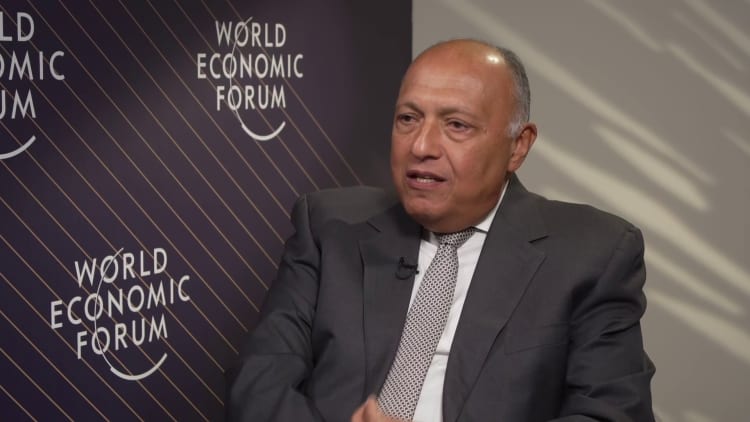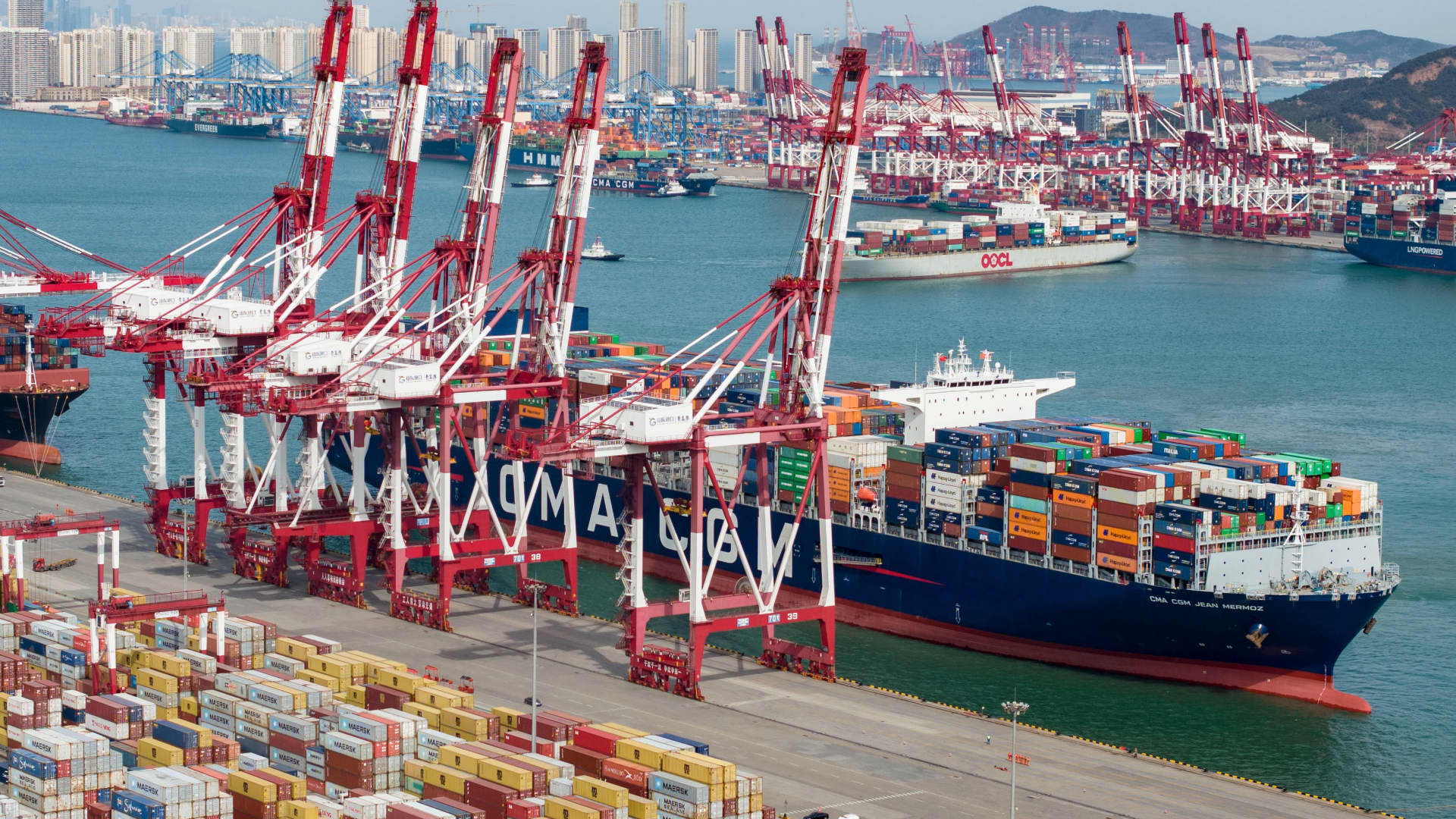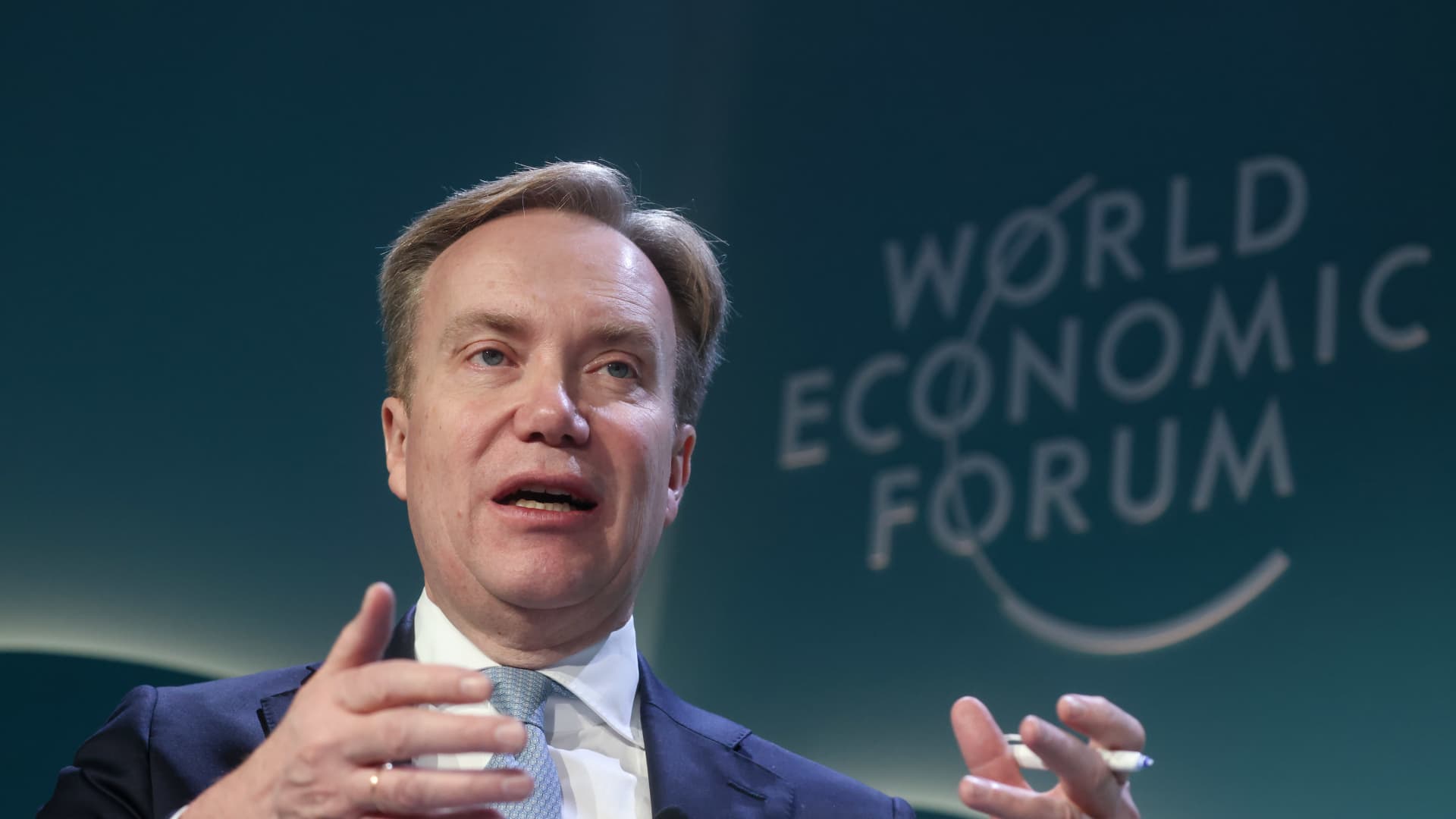Container ships of international long-distance lines, including from Europe, Africa, India, Pakistan and Southeast Asia, load and unload containers at the container terminal of the Qianwan port area of Qingdao Port in Qingdao, China, April 4, 2024.
Photo only | Getty Images
The World Trade Organization said on Wednesday it expects global trade to gradually recover this year before rising further in 2025 as the impact of higher inflation fades into the background.
In its latest Global Trade Outlook and Statistics report, the WTO forecasts that total global trade volumes will increase by 2.6% in 2024 and a further 3.3% in 2025. This follows a sharper-than-expected decline of 1.2% in 2023 as inflationary pressures and higher interest rates weighed on international trade.
“The reason for this increase is essentially the normalization of inflation and also the normalization of monetary policy, which has weighed on trade in 2023,” WTO chief economist Ralph Ossa told CNBC’s Silvia Amaro.
The recovery in trade is expected to be “broad-based,” including across Europe, which saw some of the sharpest declines in trade volumes last year due to geopolitical tensions and the energy crisis caused by Russia’s full-scale invasion of Ukraine were recorded.
“Europe has really weighed on international trade in 2023, and we don’t think that will be the case anymore,” Ossa said.
Geopolitical risks remain
Overall, global trade has been “remarkably resilient” in recent years and passed its pre-Covid-19 pandemic peak at the end of 2023, the WTO report said. However, the organization warned that geopolitical tensions could continue to pose a risk to its prospects.
In particular, the ongoing war between Israel and the Palestinian militant group Hamas could lead to significant trade disruptions if it spreads to energy markets, Ossa said.
The economist also pointed to signs of “fragmentation” in global trade along geopolitical lines.
The WTO report divided the global economy into two “hypothetical geopolitical blocs” based on UN voting patterns and found that trade growth between blocs was slower than within them. For example, in recent UN votes on the Russia-Ukraine conflict, the US and UK have typically taken similar positions, while China and South Africa have taken opposing views.
This fragmentation was particularly evident between the world’s two largest economies, the United States and China.
“We saw that trade growth between the United States and China was 30% slower than trade growth between these countries and other countries,” Ossa said, referring to the period since 2018 when trade tensions first emerged.
“That doesn’t mean they don’t still trade a lot, but their trading shares are increasingly moving away from those relationships.”
U.S.-China trade tensions came to the fore again this week when U.S. Treasury Secretary Janet Yellen said she would not rule out possible tariffs against Beijing if the country is found to be engaging in unfair trade practices. Calls for a tougher stance towards China were reiterated on Tuesday by EU Commission chief Ursula von der Leyen.
At the heart of the dispute are allegations that China is “dumping” subsidized green technology goods onto international markets, effectively undercutting domestic producers. Beijing denies the claims.
The WTO report does not provide detailed trade forecasts for China, but expects an overall increase in Asian exports of 3.4% in 2024 and 2025.
“That doesn’t mean we couldn’t or don’t expect to see an increase in certain sectors,” Ossa said.
Source link
2024-04-10 13:00:56
www.cnbc.com










